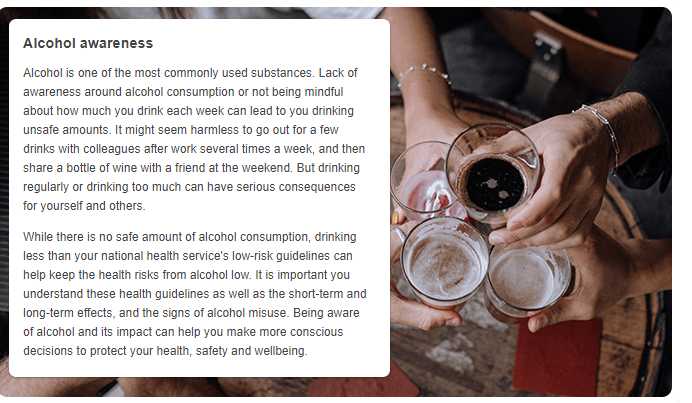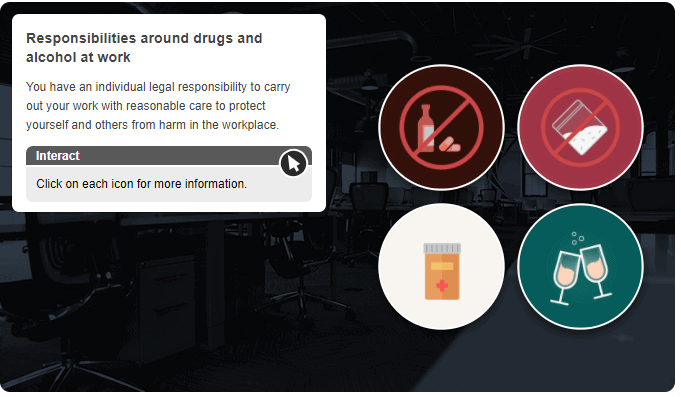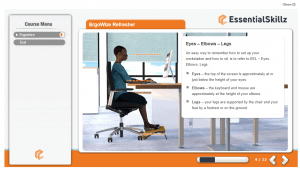Health and safety training has a reputation for focussing on safety, rather than on health. And yet while UK businesses have made huge improvements in reducing the number of people killed or injured by accidents at work, many hundreds of people are still made ill by work, resulting in premature deaths and reduced quality of life.
The HSE estimates that around 9000 people die each year in the UK from cancers caused by substances in their workplace. Across the world, it is estimated that 8.8 million people die each year from exposure to carcinogens at work. Around half of occupational cancer deaths are from asbestos, and workers should have specific training on how to avoid exposure to asbestos, following the Control of Asbestos Regulations.
However, there are many more carcinogens in the workplace that people are less aware of. The Control of Substances Hazardous to Health (COSHH) Regulations require organisations to risk assess hazardous substances, to determine what impact they could have on the health and safety of employees and of others. Organisations must then put measures in place to eliminate hazardous substances where practical, and otherwise to reduce and manage the risk. To assess the risks and to carry out the control measures, staff need appropriate COSHH training. One way to provide this is to use online COSHH training for the general principles, followed by on-the-job training to learn about specific measures used in your workplace.
When selecting online training for COSHH you need to consider which hazards must be covered. The term ‘substances hazardous to health’ tends to conjure images of chemicals in bottles, with labels warning of their corrosive, irritant or toxic properties. It is important to train people to recognise these, and to understand how to use the accompanying safety data sheet (SDS) to risk assess how the substance will be used. But COSHH assessments mustn’t end here. Many deadly substances in the workplace don’t come with labels or data sheets, and the impact takes longer to be seen. However, the outcomes are far worse than skin rashes and tickly throats, and these substances must also be assessed under COSHH regulations.
In this blog we’ll cover four common carcinogens, other than asbestos, that should be included in your COSHH training if your workers could be exposed to them.
Four carcinogens in the workplace
1. Silica dust
The HSE estimates that there are around 800 deaths from lung cancer each year due to exposure from silica dust at work, with 1000 new cases diagnosed each year. Around ¾ of cases are in the construction industry, but deaths also occur in manufacturing.
Silica dust particles, small enough to inhale, are released every time a worker saws, cuts, drills or grinds a silica-based material. While it might be obvious in a dusty quarry, silica dust is also released when working with concrete, cutting tiles and even some plastics. Invisible quantities of silica dust can cause permanent harm to lungs, in some cases resulting in lung cancer.
While reaching for the dust mask might be the first reaction, COSHH training will guide you through the process of how to consider more effective measures, such as local exhaust ventilation (LEV) and water suppression.
References:
hse.gov.uk/statistics/tables/can02-new – Retrieved 15 January 2021
wshi.gov.sg/research-priorities/nwra-2018-2020/occupational-cancer
hse.gov.uk/statistics/tables/can04 – Retrieved 15 January 2021
legislation.gov.uk/uksi/2012/632/contents
legislation.gov.uk/uksi/2002/2677/contents

2. Diesel engine exhaust
The fumes from diesel engine exhaust (DEE) contain a toxic cocktail of black carbon particles, aerosol liquids and gases including carbon monoxide and nitrogen oxides. Short term health impacts are serious enough – asthma, headaches, bronchitis, nausea and dizziness have all been linked to DEE exposure. In the longer term, the International Agency for Research (IARC) estimate that people regularly exposed to DEE at work are up to 40% more likely to develop lung cancer. A smaller, but still significant number of people, develop bladder cancer from DEE exposure. In total, the HSE estimate that 700 people die from DEE exposure at work each year.
While those working on or near roads and railways are most obviously at risk, other construction and manufacturing workers, and anyone who drives for a living, are among the casualties. A recent study by the Medical Research Council Centre for Environment & Health measured 141 professional drivers’ exposure to black carbon over four working days in London. Taxi drivers and couriers received the highest level of exposure while driving, and levels of exposure for other drivers was still high. If you have people working in, with or near diesel engines, you should include diesel in your COSHH assessments.
COSHH online training needs to consider how you combine long-term solutions with short-term control measures. Long-term you might replace diesel vehicles with electric, or where that’s not practical, with vehicles with zero emission from the tailpipe. In the short term, exposure can be reduced through maintenance and replacement of diesel engines, through ventilation, extraction, physical barriers and filters. Administrative controls can be applied quickly, for example drivers can keep their windows shut, and plan journeys at quieter times to reduce exposure.
3. Mineral oils
Mineral oils are found in many metalworking fluids (MWF), and are used as lubricants and coolants, and to reduce corrosion. Metal workers, machinists and maintenance engineers in manufacturing, printing, cosmetics and pharmaceuticals are most affected, but anyone working near machinery that uses mineral oil containing MWF can be harmed.
When heated or under pressure, the oil generates an aerosol or mist, which is easily inhaled if people are not protected. Around 400 deaths each year in the UK from lung cancer, and a further 200 from bladder cancer are attributed to past exposure to mineral oils. In addition, mineral oils are believed to be responsible for 1700 people a year suffering from non-melanoma skin cancer (NMSC). Although not fatal, this represents 1700 families suffering the anxiety and discomfort that comes with diagnosis and treatment. Exposure also causes dermatitis and asthma.
The first step in COSHH management is to look at reducing or eliminating the use of mineral oils. MWF with lower levels of mineral oils can reduce the risk of cancer, although still require management because of the other hazardous outcomes. COSHH management and assessment for MWF need to consider storage, mixing, cleaning and disposal of mineral oil products, as well as physical barriers and LEV during the use of equipment that could release mist. Where any residual risk remains, PPE to protect the skin, and RPE for the breathing will be needed.
References:
iosh.com/the-driver-diesel-exposure-mitigation-study.pdf
4.Welding fumes
Like DEE, welding fumes contain more than one hazardous substance. Fumes include fine particles of metal, metal oxide and flux, as well as carbon monoxide, nitrous oxides and ozone. The HSE estimate that 200 occupational cancer deaths each year are caused by welding. In addition to lung and kidney cancer, welding fumes increase the likelihood of asthma, pneumonia and damage to the nervous system. Welding can expose people to another carcinogen, UV radiation. People in manufacturing and fabrication are most exposed. The risk is higher when welding metals contain chromium and nickel (like stainless steel) and cadmium or beryllium.
In 2019, after the IARC published updated evidence on the links between exposure to welding fumes and lung and kidney cancer, the UK HSE raised the standard of controls required for welding fumes. HSE inspectors will expect organisations to demonstrate that they are using the hierarchy of controls, and that staff have received appropriate COSHH training.
Conclusion
Lung cancer remains the most common cause of cancer death, both in the UK, and across the world. Despite advances in many areas of cancer treatment, 5-year survival rates for lung cancer are still poor compared with other common cancers. While smoking is still a common cause of many cancers, exposure at work to the carcinogens described here (including asbestos) are significant factors. Bladder cancer incidence could also be prevented by reducing workplace exposure.
Employers have a responsibility to identify and reduce exposure to carcinogens, and to provide relevant information, instruction and training.
Online COSHH training can support that process, explaining how to use the types of control measures described here, as part of a risk assessed solution. Staff also need information and training on health surveillance, so they know which symptoms to report before it’s too late.

cancerresearchuk.org/cancer-statistics/mortality/common-cancers-compared
roche.com/research_and_development/oncology/lung-cancer
hse.gov.uk/statistics/causdis/cancer.pdf












 So for training programmes to be successful, we can’t look at training as a one-off, box-ticking exercise. Information needs to be refreshed and reinforced regularly to achieve long-term learning and create behavioural change across the organisation.
So for training programmes to be successful, we can’t look at training as a one-off, box-ticking exercise. Information needs to be refreshed and reinforced regularly to achieve long-term learning and create behavioural change across the organisation. Provide opportunities and encourage employees to apply their new knowledge and/or skills. For example, after your employees learn about creating inclusive meetings in the
Provide opportunities and encourage employees to apply their new knowledge and/or skills. For example, after your employees learn about creating inclusive meetings in the  Enrol your employees in short refresher courses that contain the most, critical, need-to-know information from the full-length course. This will help employees improve their recall in an easy, time-saving way while also allowing the organisation to record training completions and test scores.
Enrol your employees in short refresher courses that contain the most, critical, need-to-know information from the full-length course. This will help employees improve their recall in an easy, time-saving way while also allowing the organisation to record training completions and test scores.







